
Wouldn’t it be a dream if you could graze in your garden from early spring to late fall?
By this I mean, continuously munching a leaf or an edible flower here and there, not standing idly by until Brussels sprouts are ready after the first frost. One shouldn’t even have to wait for a whole head of lettuce to be perfectly formed before eating a salad for that matter. Move over iceberg, cut-and-come-again lettuce is coming to even more backyard gardens this summer.
Cut-and-come-again gardening sounds exactly like it is.
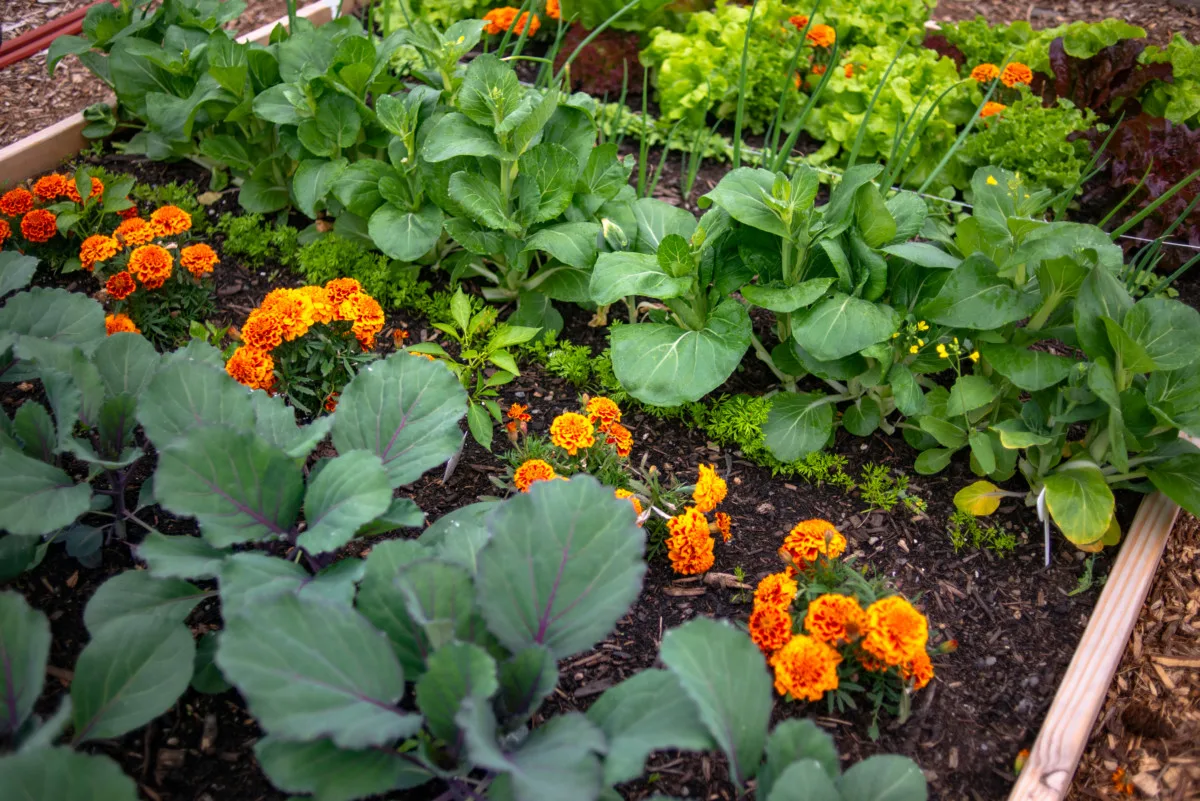
In essence, a cut-and-come-again garden involves numerous small harvests from the same plant. Each time you cut away the mature leaves and dine on those, leaving the new growth untouched to continue, well, growing.
This method of gardening works wonderful in combination with more traditional methods, and yes, you can even incorporate it into your no-dig garden. Cut-and-come-again gardening is absolutely ideal for raised beds too.
How about a cut-and-come-again container garden? Sounds like a fabulous idea!
Benefits of a cut-and-come-again garden:
Continuous Harvest
Depending on the types of crops and how many of them you have in the garden, you may be looking at a weekly harvest, even a daily one. If you only need a few fresh chives every day for your fried eggs, one bunch will last a good long while.
Efficiency At Its Finest
You know how long it takes for seeds to germinate and finally reach an edible stage. It’s not a question, it’s a fact. It takes a long time. Staggering your planting time of crops in the garden is one thing, but having to transplant throughout the summer is no fun at all. And gardening should be fun, so do it with an efficient plan – eat the mature leaves and allow the plant to continue growing.
Slows Bolting
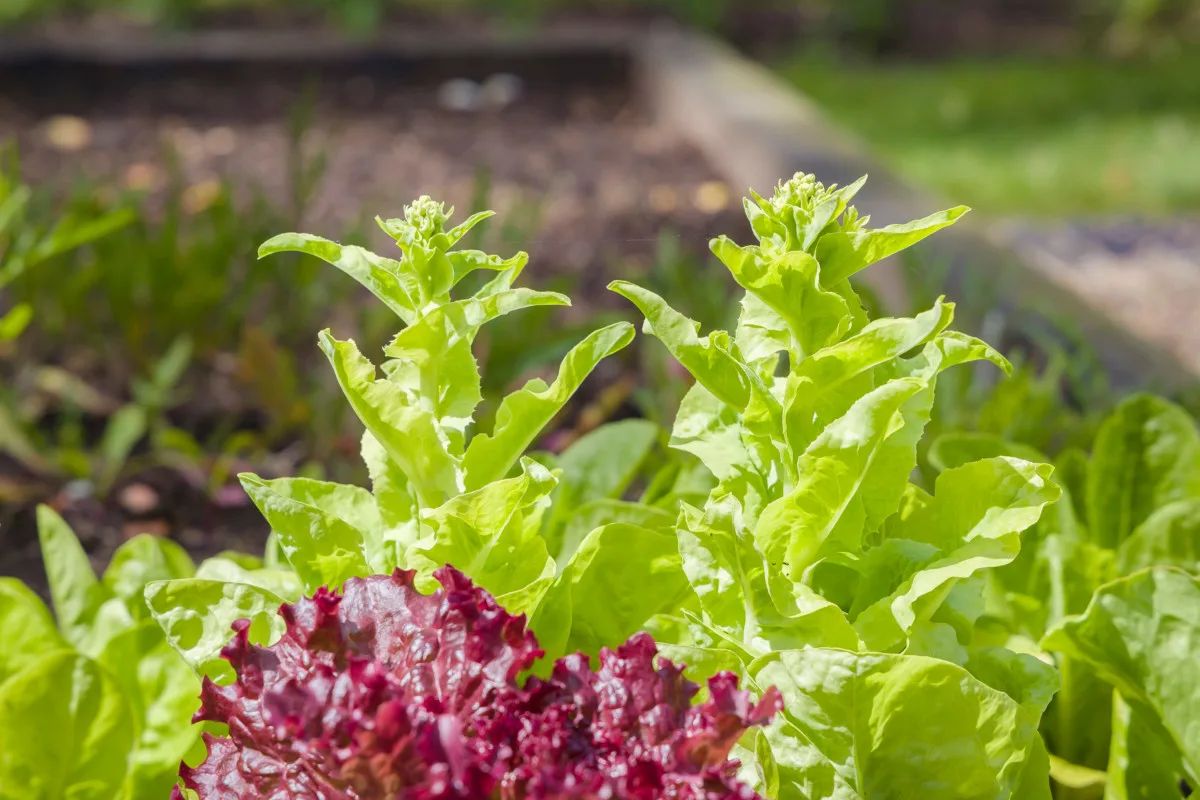
Lettuce, spinach and other leafy greens are known to bolt quickly in hotter temperatures. All this means is that they go to seed, often becoming bitter in the process. While you may have some seeds to save, you’ll also have less to eat when this happens. Here’s how to stop your vegetables from bolting.
Saves Time, Money and Garden Space
With a cut-and-come-again garden you only have to plant (or transplant) once. Then irrigate, weed and mulch as normal, thus saving both time and money on what otherwise would be spent on more seeds or seedlings. Also, if garden space is an issue, know that you can grow a lot in a tiny garden and a continuous harvest suits a small garden perfectly.
Now, onto choosing the best veggies – and flowers – for your cut-and-come-again garden.
22 Cut-And-Come-Again Veggies Anyone Can Grow
If you happen to live in an area with a shorter than average growing season, you’ll likely be looking for ways to extend your harvest. Outside of row covers, cold frames and greenhouses, cut-and-come-again veggies are the cheapest and least complicated option for extending your season.
For starters, think about what plants grow in a rosette fashion. These are best suited to multiple harvests, or grazing, as one might call it out in the wild. Lettuce, dandelion and plantain all fit in this category.
Not only does a cut-and-come-again garden take little work, but it can also provide you with plenty of nutrient-dense veggies. In fact, they account for the first 12 out of 20 on this list.
1. Arugula
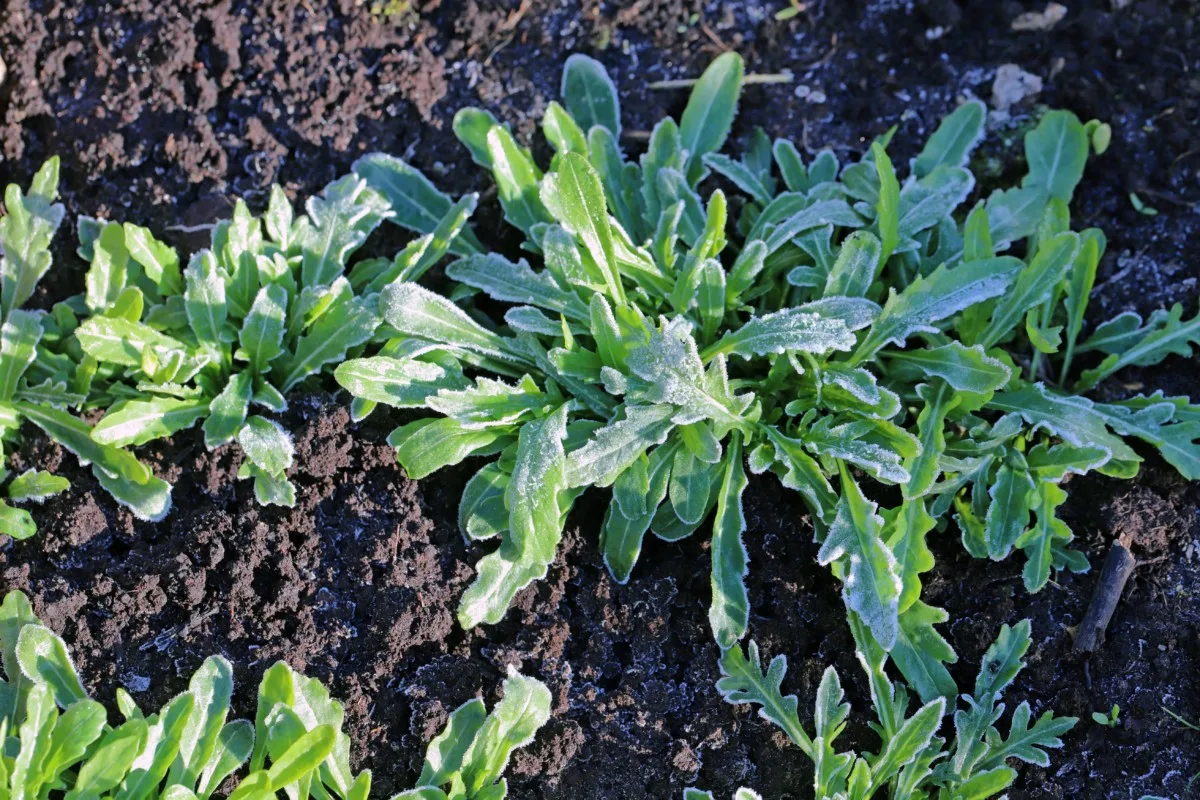
Who doesn’t love rocket? Well, actually, I know a few people, but the loss is on them because arugula really is a mouthwatering plant.
This spicy, peppery, fast-growing leafy green can easily be sown throughout the cooler months. Add to that a harvest time of 40 days and the fact that it is self-seeding (you can also eat the flowers and immature seeds), and you can easily see why it’s worth growing.
To extend your arugula harvest, be sure to pinch back the outer leaves and leave the center alone. Never harvest more than 1/3 of the plant at once, and wait a week or more between harvests.
When it ceases to grow, you can always sprout seeds inside or grow them as a microgreen to keep the peppery leaves coming.
When planting arugula in containers, make sure it doesn’t bask in the full scorching sun. Also, be sure to provide a consistent amount of water.
2. Basil
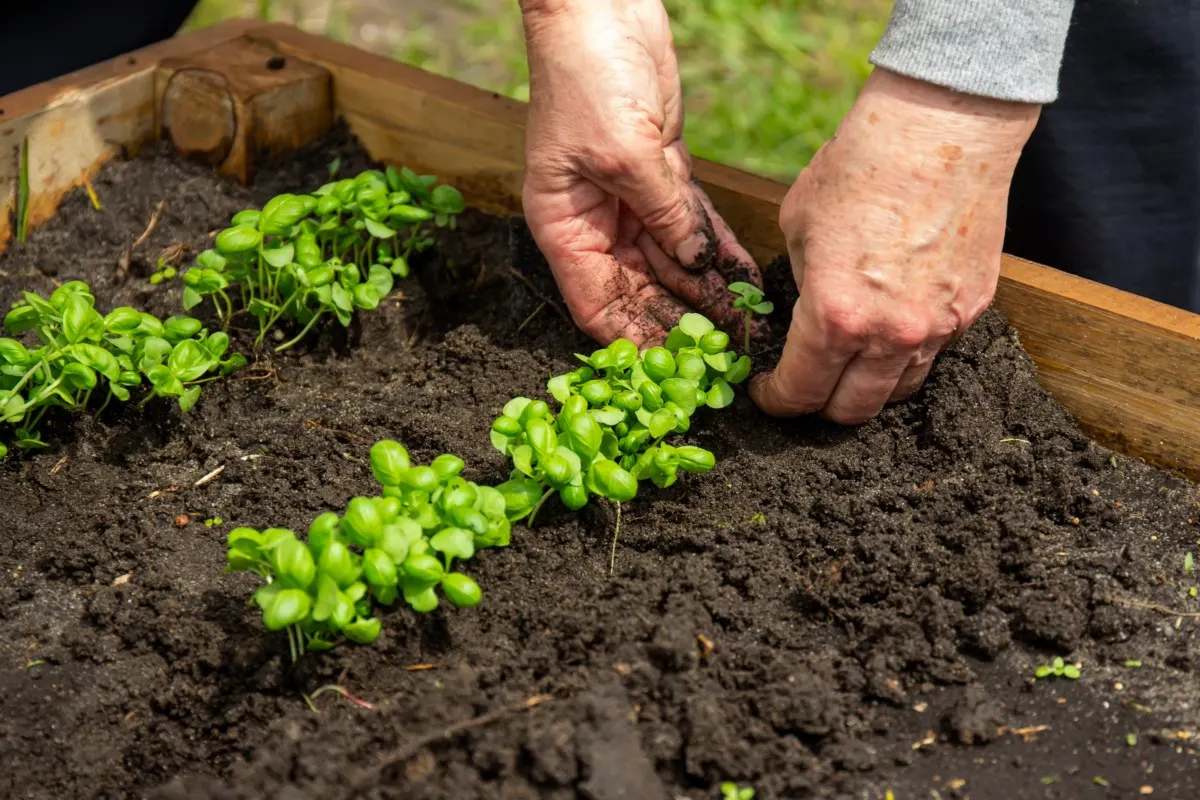
For many gardeners, basil is a must-have herb in the garden. Most of the time it goes into pesto, but the bountiful leaves can also be dried and used as a spice. You can also put a few basil leaves on pizza or pasta, blend them into soups and salads, and toss a few green fragrant leaves into your morning smoothie.
Best of all is when you can head straight out to your garden and harvest it fresh. After all, you don’t need loads of it at once.
It’s also worth noting that as you pinch out the leaves, it encourages the plant to grow even stronger. This gentle harvesting also prevents flowering, which extends the time you can harvest.
Related reading: How to Grow Enormous Basil Plants: From Seed, Cuttings Or Starter Plant
3. Beet (Greens)
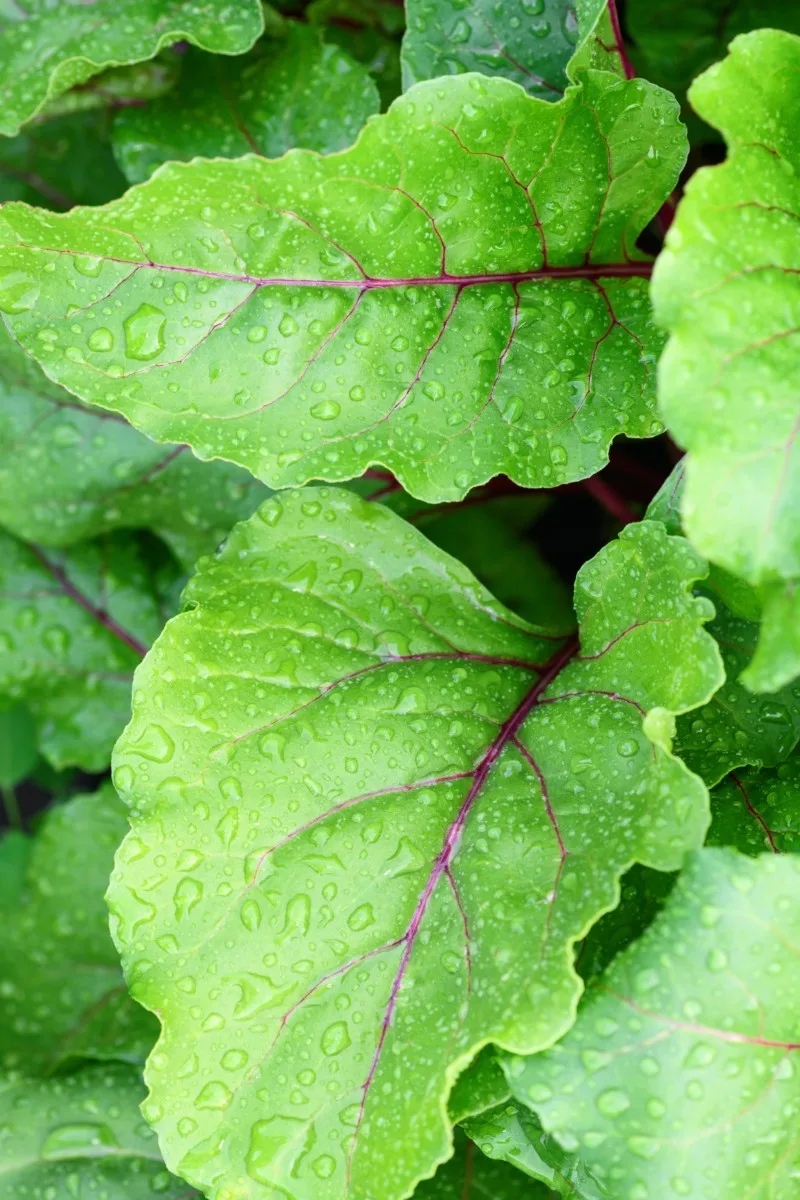
Not everyone gets excited about eating beets. I get it. Pickled beets are nice, a borscht is okay, but in general, beetroots are an easy pass. Although my husband begs to differ.
Let me tell you that even if you aren’t so fond of the root, beet greens are so much tastier. In fact, it’s hard not to like them.
Though you won’t find beet greens at a grocery store, chances are good that you can catch them at your local farmers market, or from a CSA. When you grow them in your backyard, you can eat them all summer and fall long.
What do beet greens taste like? Well, they are tender, mild and sweet with an earthy flavor, reminiscent of the beetroot itself. They are similar in flavor to Swiss chard and can be used in place of it in any recipe. Likewise, they can be substituted for spinach as well.
When you grow beets with the intention of eating only the greens, they can be planted closer together in rows. Simply sow the seeds 1/2″ apart and skip the thinning part. Once they are large enough to eat, pick one or two outer leaves from each plant, leaving the center intact.
4. Bok Choy
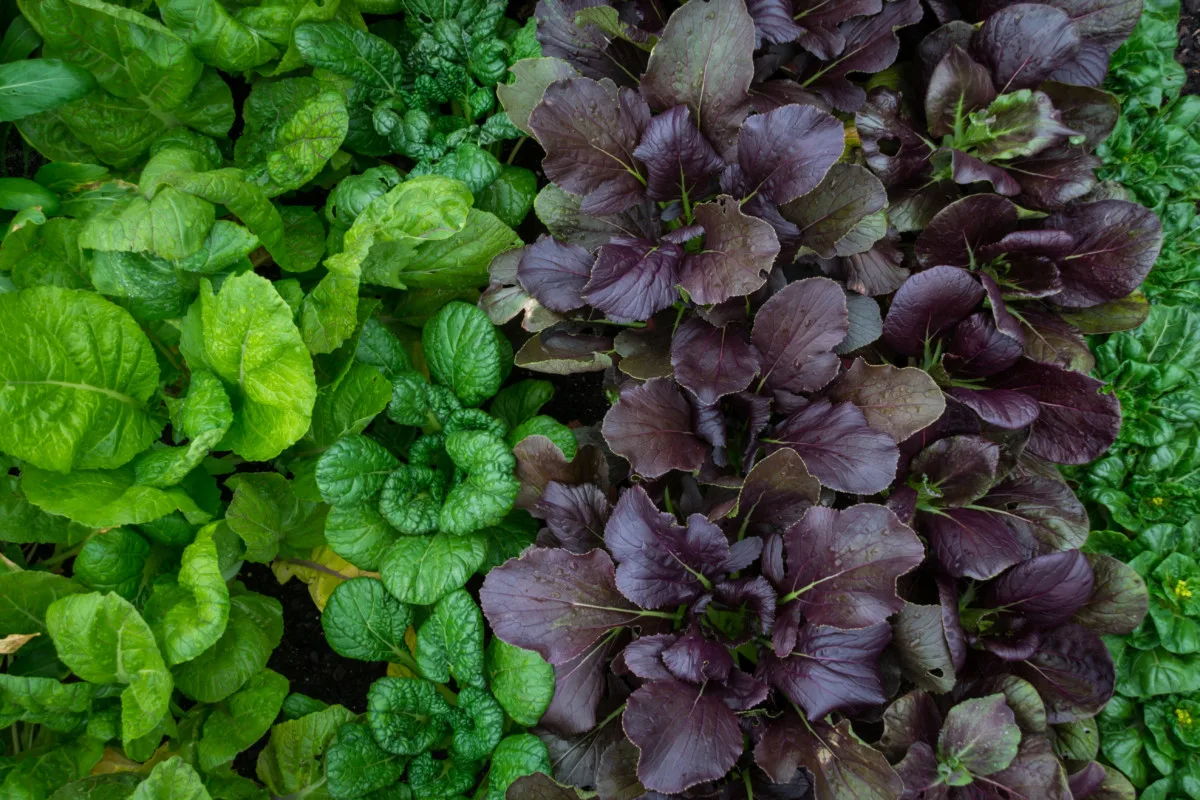
Bok choy doesn’t only belong in stir-fries. It can also be braised, roasted, grilled or tossed in soups. If you aren’t familiar with it yet, you should be, as it is a veggie that can tolerate light frost, leaving you with a crop to harvest well into autumn.
In the grocery store, you’ll always find it on display as an entire plant. It’s easier to be sold this way. However, when you grow your own, bok choy can certainly be grown as a cut-and-come-again veggie.
When it comes to harvest time, go ahead and snip off outer leaves one or two inches from the base. Use a garden knife or kitchen shears for this, do not rip and risk the roots and core of the bok choy. As with most cut-and-come-again-veggies, aim to harvest less than 1/3 of the plant each time you are hungry. New leaves will regrow, but this can take some time.
5. Broccoli
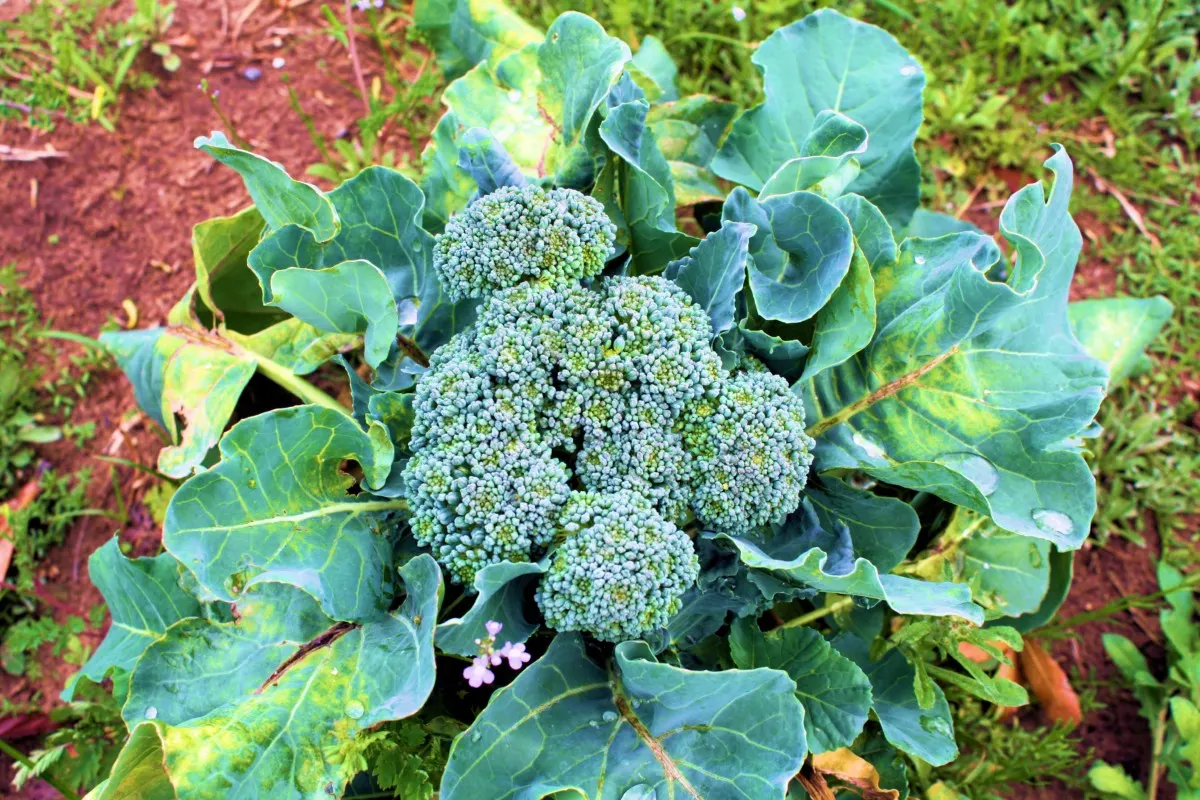
When people think of buying broccoli, they automatically imagine dense green heads wrapped in plastic, the stems held together with a rubber band.
This will not happen in your garden. First of all, there is little to no need for plastic.
Secondly, not all broccoli needs to form large heads. Cut-and-come-again broccoli (any variety will do) refers more to the way it is harvested. Naturally, a larger head will form first. Go ahead and enjoy this as you wish. After this is cut off, you’ll find that side shoots will continue to grow.
Eat these at any time as “baby” broccoli. Raw or cooked, they taste just as wonderful as the original harvest.
Don’t forget to eat your broccoli leaves too! These can be prepared as with any other leafy green: added to soups, stir-fries, sandwiches and egg dishes.
6. Carrot (Greens)
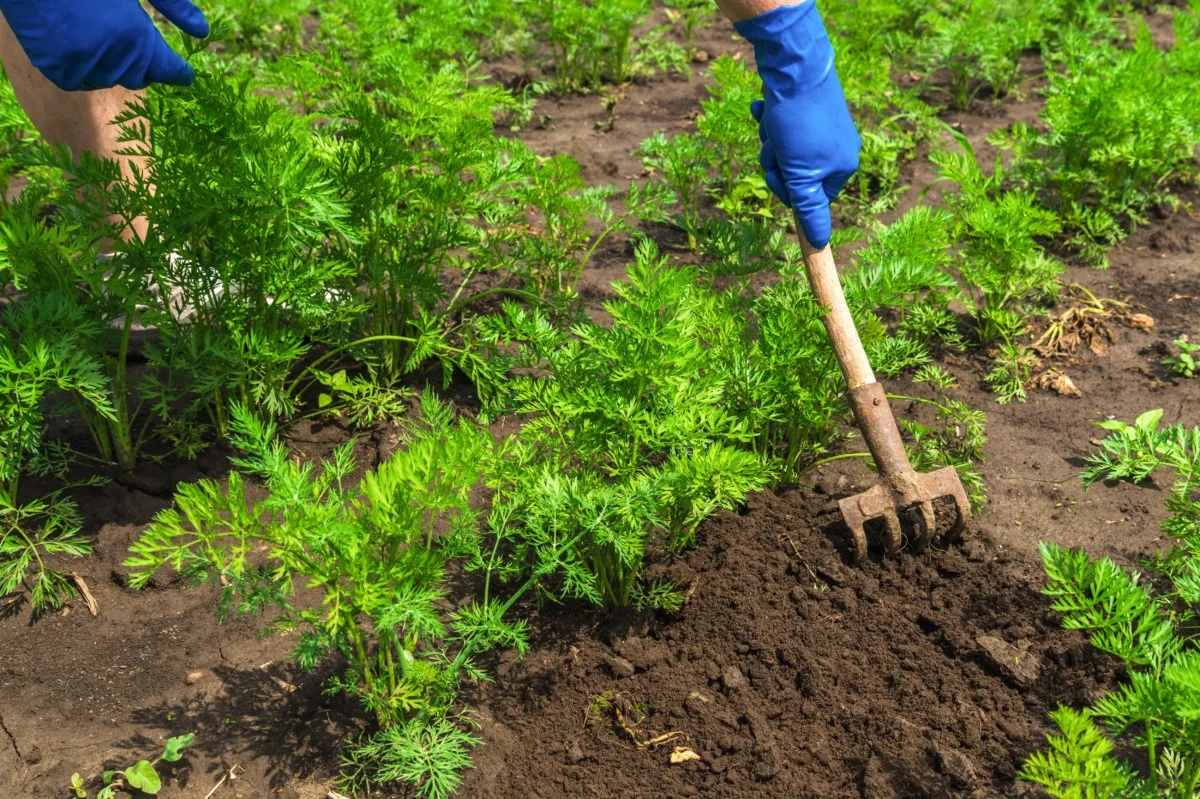
Getting carrots to grow can be tricky.
They are fussy about the quality and density of the soil, they demand their space and the amount of water they receive must be just right.
One day we quit caring about how they looked underground and started catering to the greenery above the soil. And you know what? We never looked back. Carrot tops are one of the most reliable greens in our no-dig garden.
Not only that, but they also act as perennials when we leave the roots in the soil. From one year to the next, they just keep giving and giving. Of course, they stay green all throughout summer too.
Seeing as how you don’t need a lot of carrot greens to flavor a meal, it’s always nice to head outside and pick a small handful of leaves. Chop them up and add them towards the end of cooking a meal.
If you are looking for time efficiency and prolific food in the garden, carrot tops should be one of your go-to plants. Cut-and-come-again carrot leaves – you won’t find them in the store, but into the soup they go.
Here are some brilliant recipes for eating carrot tops.
7. Celery (Leaf)
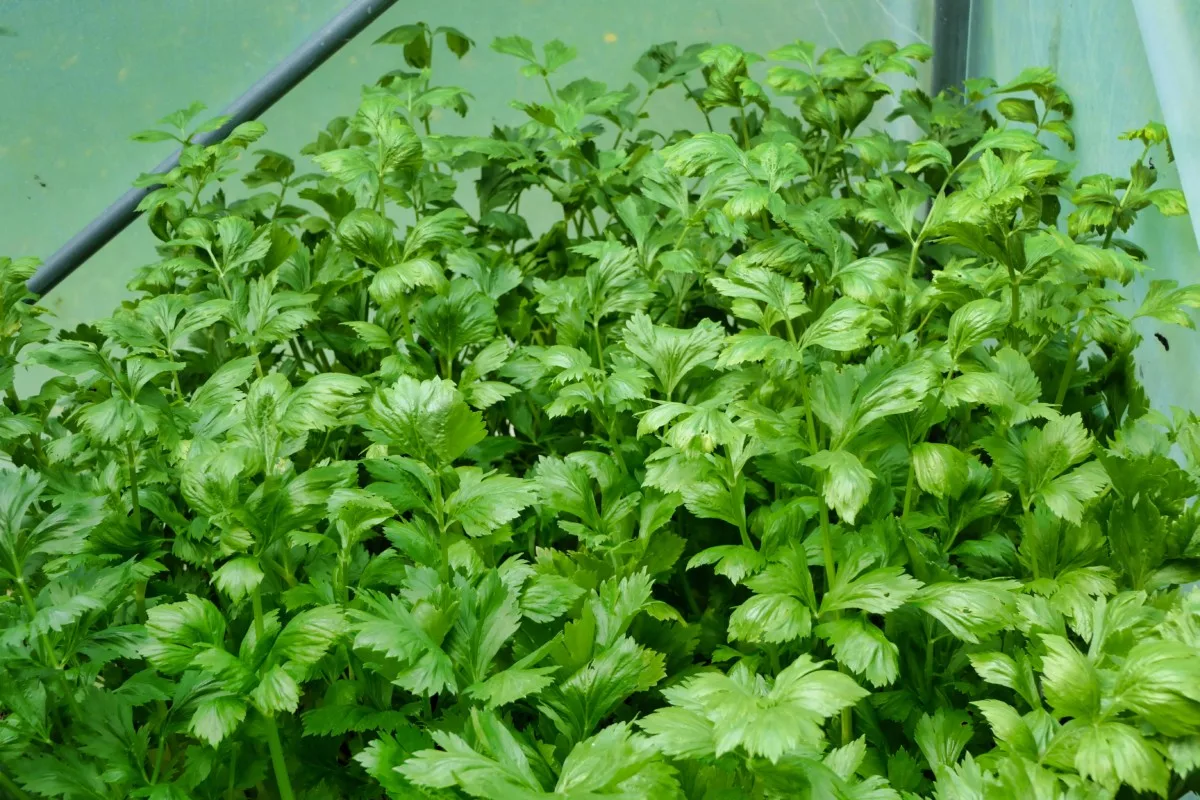
Another leaf to top the charts is celery. Often, the first thing we think of is stalk celery. Have you ever tried to grow that at home? I’ll leave that one to the professionals, as it doesn’t grow very well in our cold and rainy mountain range.
Gardening, to some extent, should be mildly effortless. There’s enough to do already without having to fuss about perfect stalks. Besides, celery has a long growing season of 130-140 days. Let’s be honest, most of us don’t have time to wait so long for food.
But what about celeriac? It doesn’t take quite as long to grow as stalk celery, however, if space is a concern in your garden, it may be sitting there waiting to mature for too long, taking room away from other, faster-harvested crops.
Instead, take a look at cutting celery for your cut-and-come-again garden.
Cutting celery seeds can be sown directly into the soil in full sun or partial shade.
Harvesting of leaves and stalks happens as soon as the plants are large enough and before they begin to flower. You’ll have to monitor them for this. As with most cut-and-come-again veggies, harvest the outer stalks, cutting them 3/4 of the way down the stems.
In this way, the celery plants will keep growing fresh young greens. If you have too many stalks to harvest at once, you can keep them crisp in the fridge for several weeks.
8. Chicory
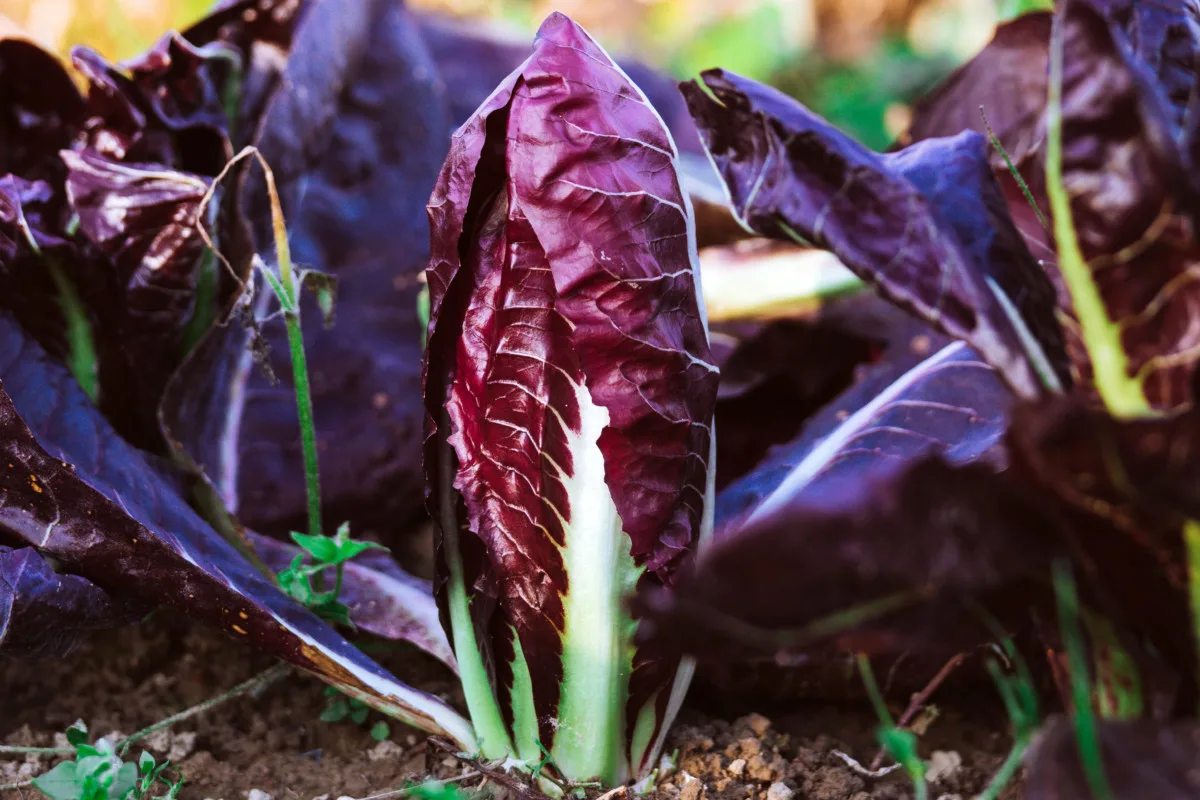
In our list of veggies to harvest more than once a season, you’ll notice a couple of odd ones. Number 10, 16 and 18 belong to the more eccentric cut-and-come-again veggies.
While chicory, otherwise known as radicchio, isn’t exactly strange, it isn’t as readily accepted as most sweeter vegetables are. That being said if it should happen to find its place in your garden, or at your dinner table, honor it for the bitter leaf it is.
Chicories are easy to grow, they are beautiful in shape and color and insects don’t seem to care much for them either. Plus, in many climates, they can overwinter in the soil and become the earliest harvested greens in the garden.
The only way to know if you’ll like it is to try it. Here’s a small selection of radicchio varieties and where you can buy them from:
- Perseo (red radicchio)
- Giorgione (green radicchio)
- Fenice Castelfranco (green with speckles of ruby)
- Nettuno Sugarloaf (oblong green radicchio)
9. Chives
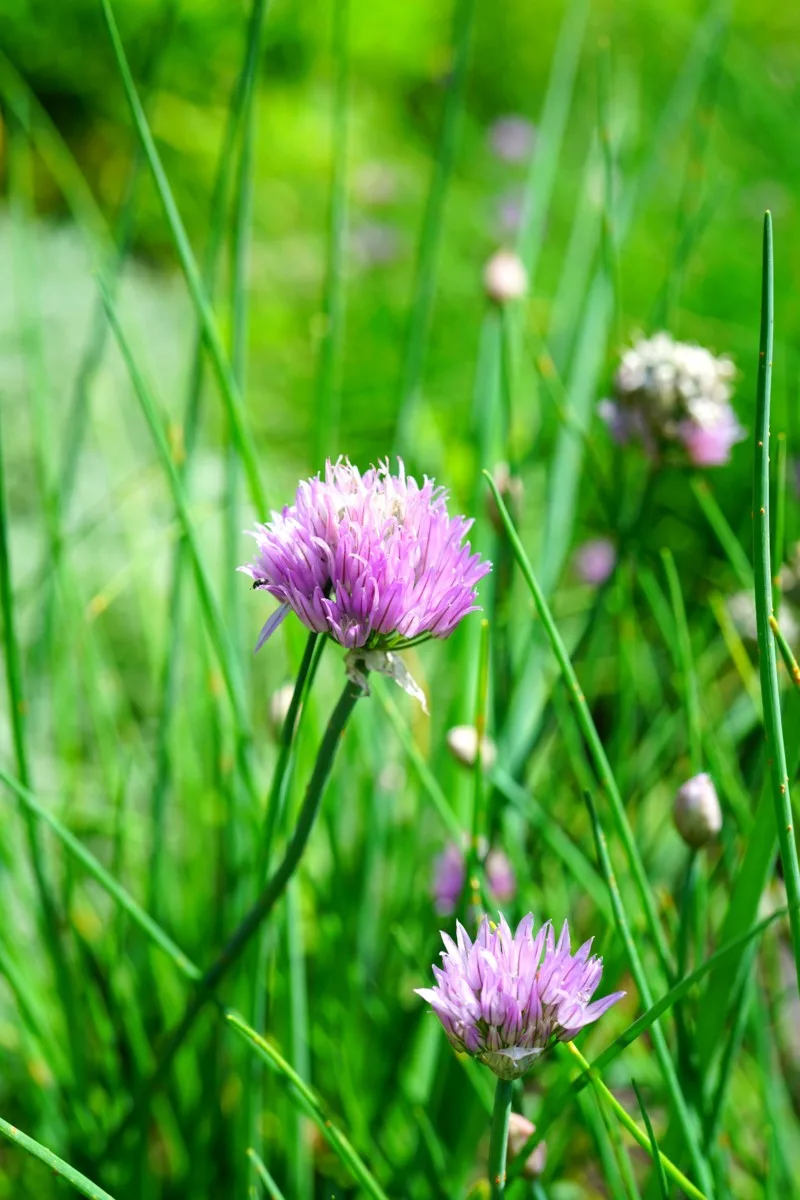
A very popular perennial, especially if you are a fan of baked potatoes with sour cream – is chives.
Elizabeth has long ago offered up 10 reasons to grow chives in your garden. If you aren’t convinced that you should find space for a bunch after reading that article, then you can skip straight to the dandelions.
If you have time to hang around a little longer, I’d like to remind you that chives can be harvested all summer long. The green stems can be harvested one at a time as you nibble in the garden. They can also be cut back with scissors should you need more at once.
Chives are an excellent ingredient for fish dishes. They are perfectly suited for potatoes, soups, omelets, bread and salads. Plus, the flowers are also edible, which makes them even more beautiful.
10. Dandelion
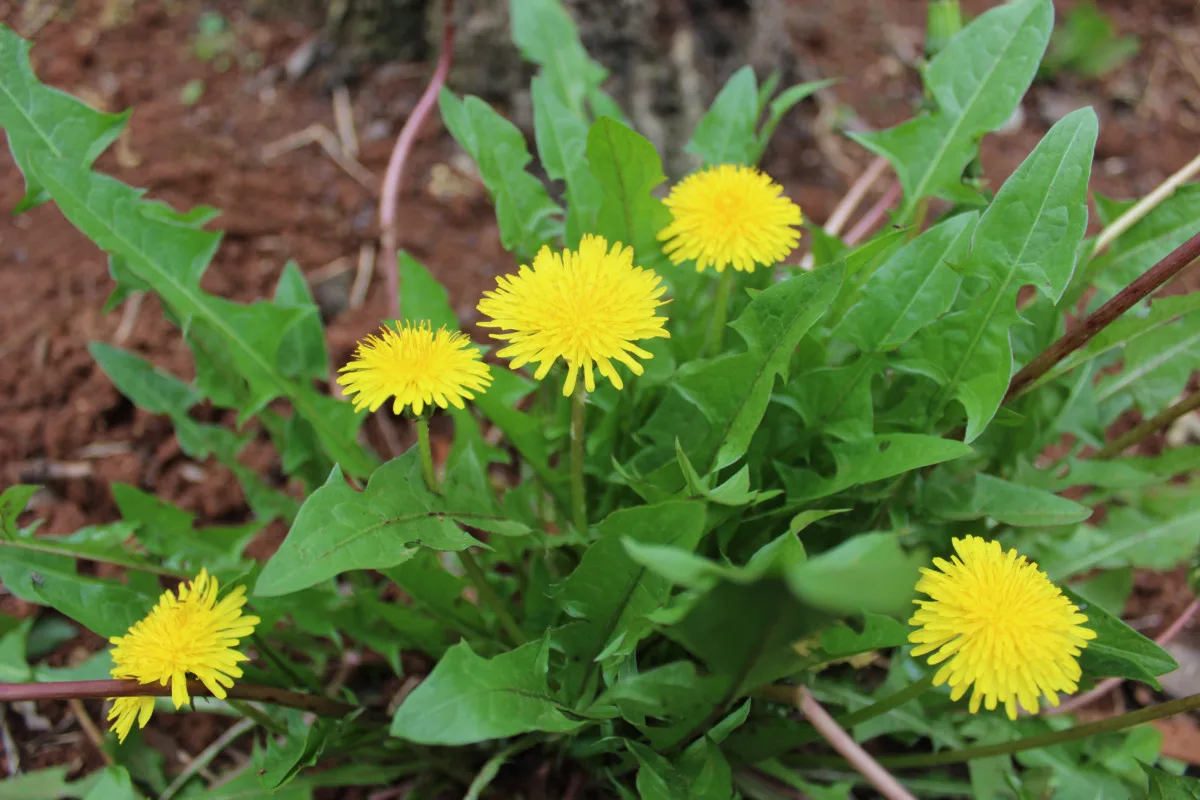
To add an uncommon garden plant, that probably already grows in your garden, you need to look no further than a most common weed: dandelion.
If you’ve been reading Rural Sprout for some time now, you’ll likely have found out that these yellow blossoms are true gems. And no, you don’t have to save the dandelions for the bees.
In fall, the dandelion roots can be lifted, washed, dried, roasted and then ground into a caffeine-free coffee substitute. They can also be magically transformed into bitters or a healing tincture.
Flowers are wonderful for infusing oils or eating as fritters. Never forget the delightful dandelion mead that can be brewed at home.
Most of all, it’s the leaves that are really the star of the garden, for the largest greens can be plucked in spring and early summer for use in salads, bread and, of course, nourishing teas. If you think about dandelions as garden plants (which you don’t actually have to plant at all), then maybe they can gain the recognition they deserve.
11. Green Onions
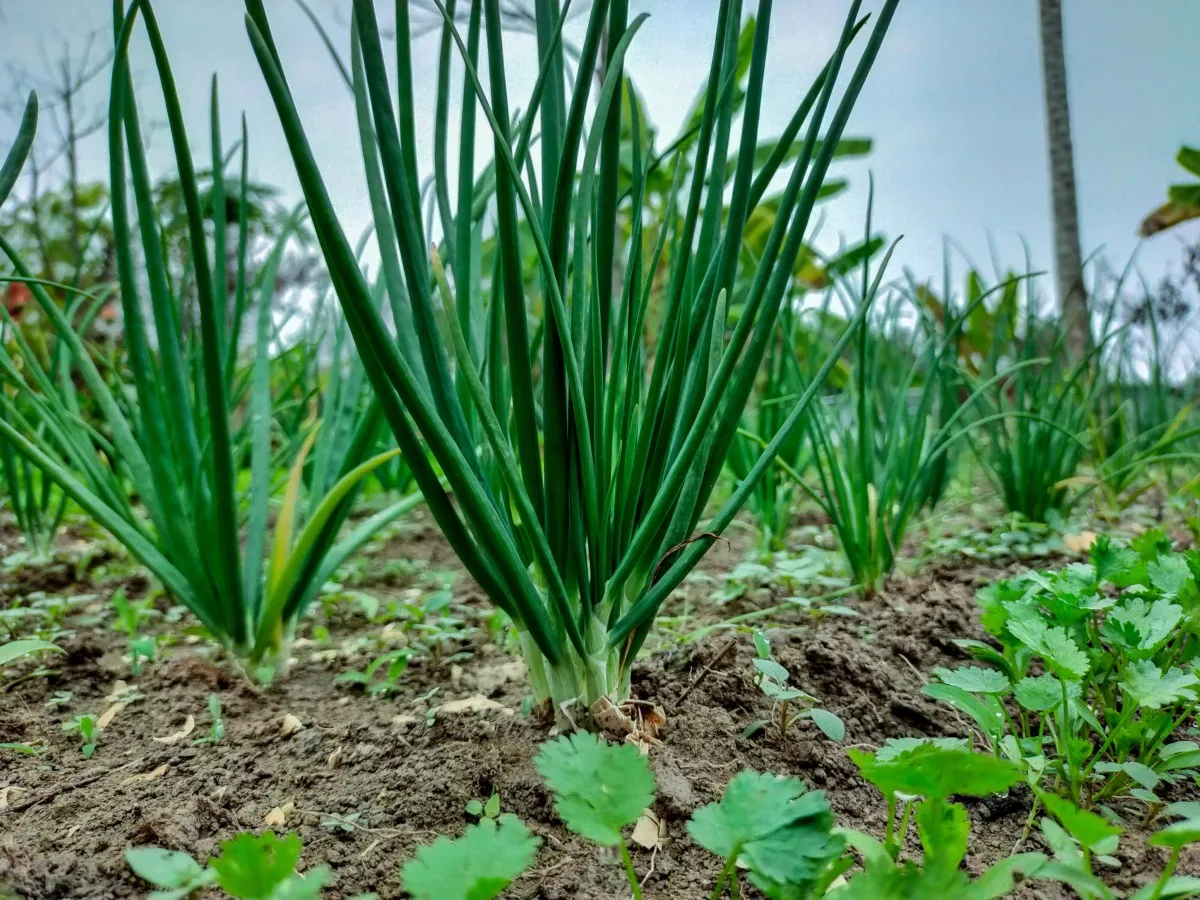
Have you ever harvested onions in fall, only to find a few that you missed come up again in spring? Especially if you mulch your garden, this is bound to happen. In our garden, onions are perennials.
So, outside of dandelions and cleavers, onions are the absolute first greens we get to munch on from the garden. Try leaving a line of onions in the ground one year and experience it for yourself.
I hear you wondering, how do they become cut-and-come-again? Well, spring onions, scallions and bunching onions (all the same plant with different names) actually benefit from the removal of a few green stems here and there.
Out in the garden, you can fit a lot in a small space. Go ahead and plant them nice and dense for a continual summer harvest.
Just for fun, spring onions are one of the veggies you can also regrow from scraps.
12. Herbs
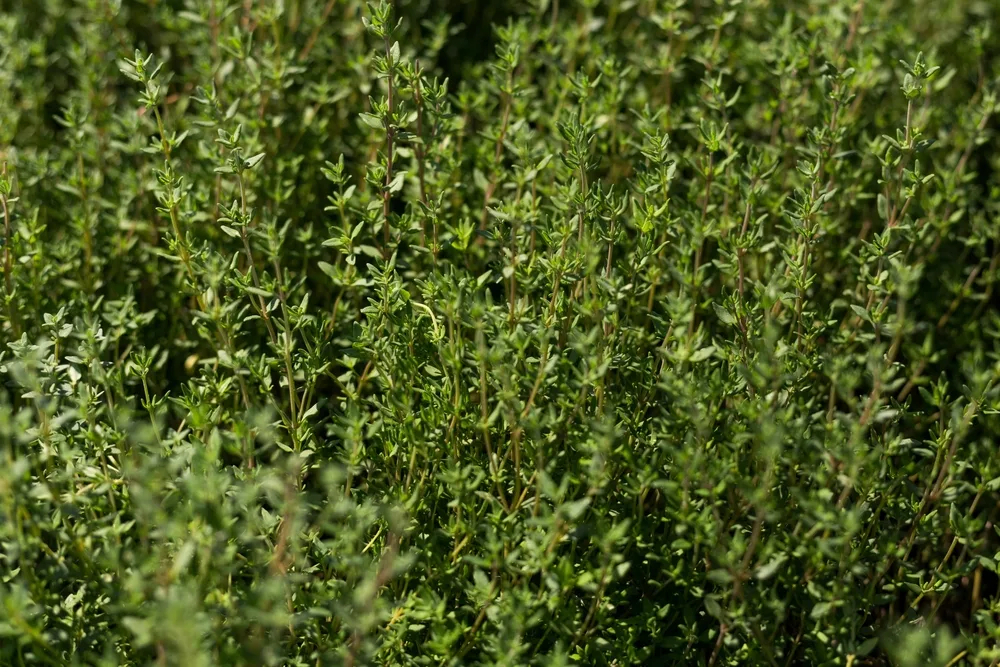
You don’t need a dedicated herb garden to grow herbs in your garden. They will grow wherever they are planted, even in pots – outdoors or in.
However, if you do choose to grow herbs, start with picking your favorites, then branch out into the lesser-known herbs.
There are plenty of cut-and-come-again herbs to choose from:
Harvesting couldn’t be simpler. All you have to do is pluck a small branch or a few leaves as necessary. Leave the plant to grow until you are ready to harvest more.
13. Kale
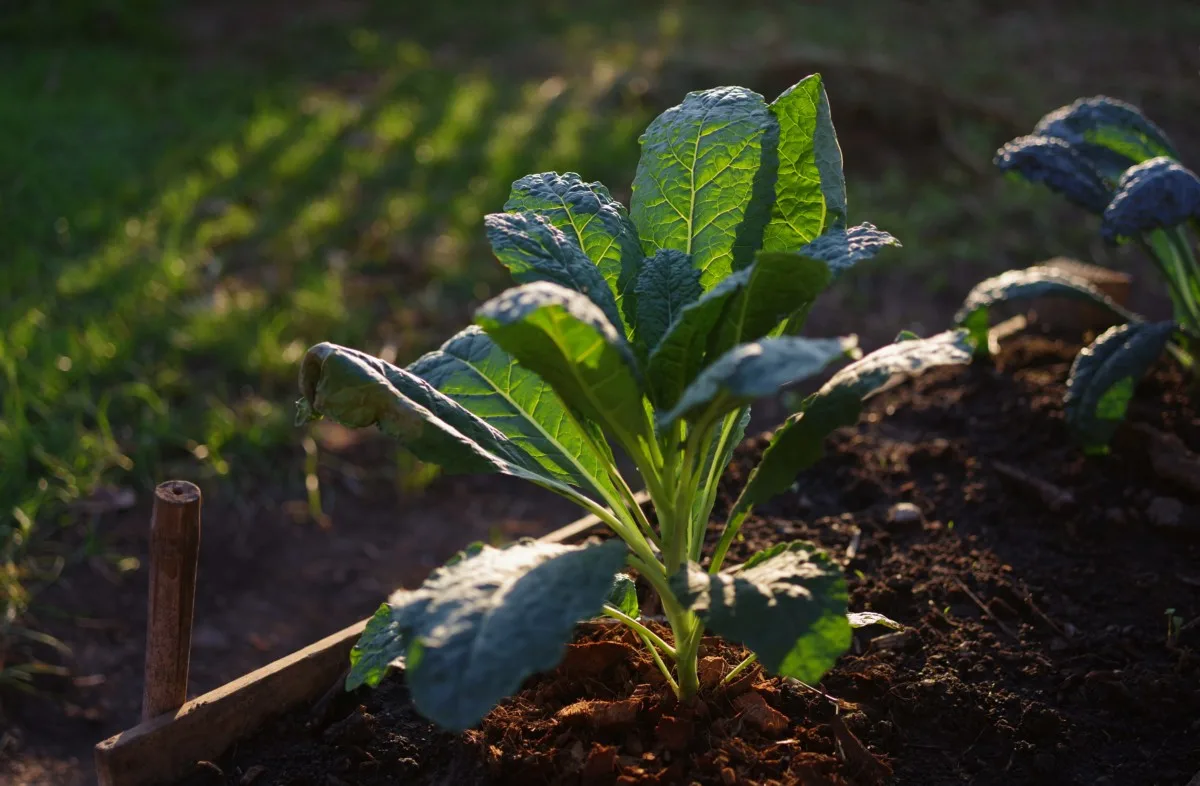
Kale is a wonderful garden crop because of its prolonged harvest time. One might even consider it the ultimate cut-and-come-again veggie in your garden.
I wouldn’t go that far, especially with so many tasty vegetables to choose from, though it does have its merits.
For example, kale can grow quite large, meaning there is plenty to eat, even on a single leaf. You can also start harvesting 60 days after planting. Combine that with the amazing nutrition in kale and you’ll see why kale deserves a spot in your garden.
If you follow all the planting rules and get a decent crop, you’ll be able to harvest new greens every one or two weeks. When you combine kale with other garden crops, your chances of a continuous harvest are multiplied.
14. Lettuce
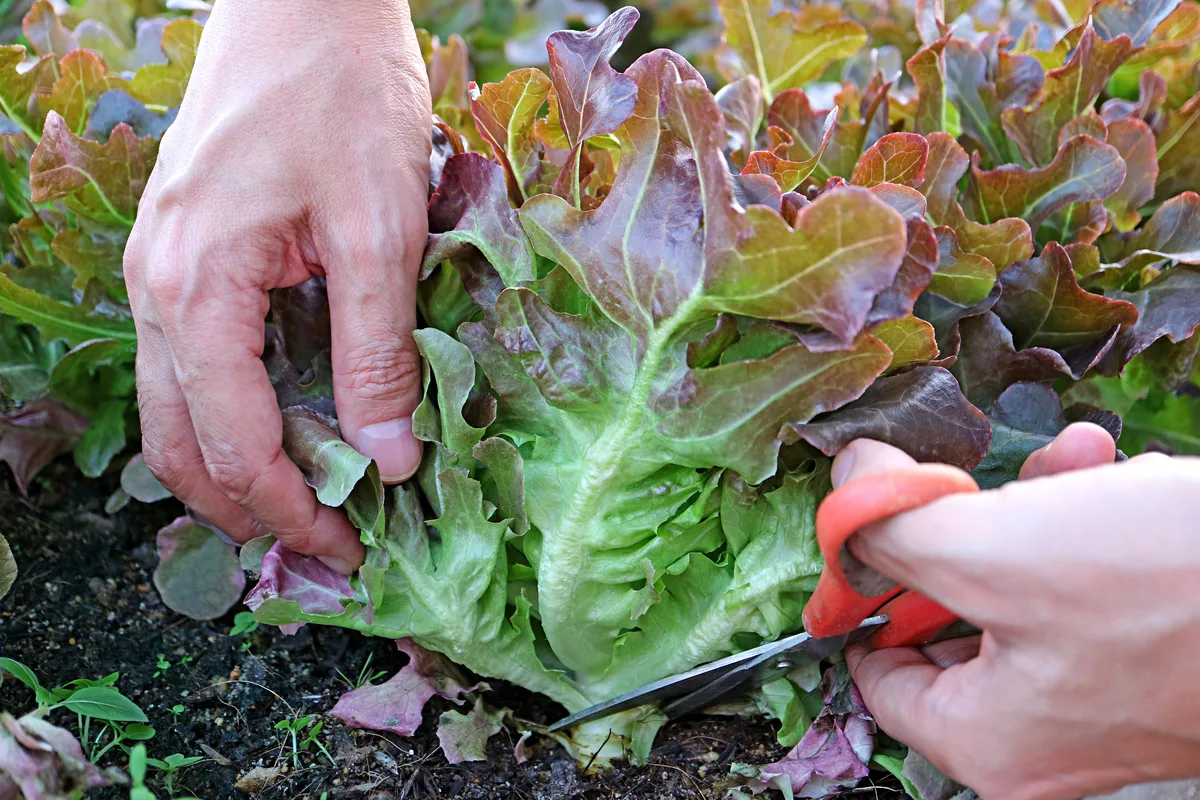
Lettuce may not grow in the highest heat of summer, though there are early varieties for spring and later varieties for fall production. Get your hands on both of those kinds of seeds and make sure they are of the cut-and-come-again lettuce type.
Sow your seeds directly in the soil, or in pots, lettuce isn’t too picky about where it grows, so long as it receives enough water.
When it comes time to harvest your loose-leaf lettuce, morning time is best. That’s when the leaves are sweet and full of moisture. To harvest, use scissors and remove the outer leaves about 2″ above the crown. This way more inner leaves will grow as the root remains undisturbed.
15. Mustard Greens
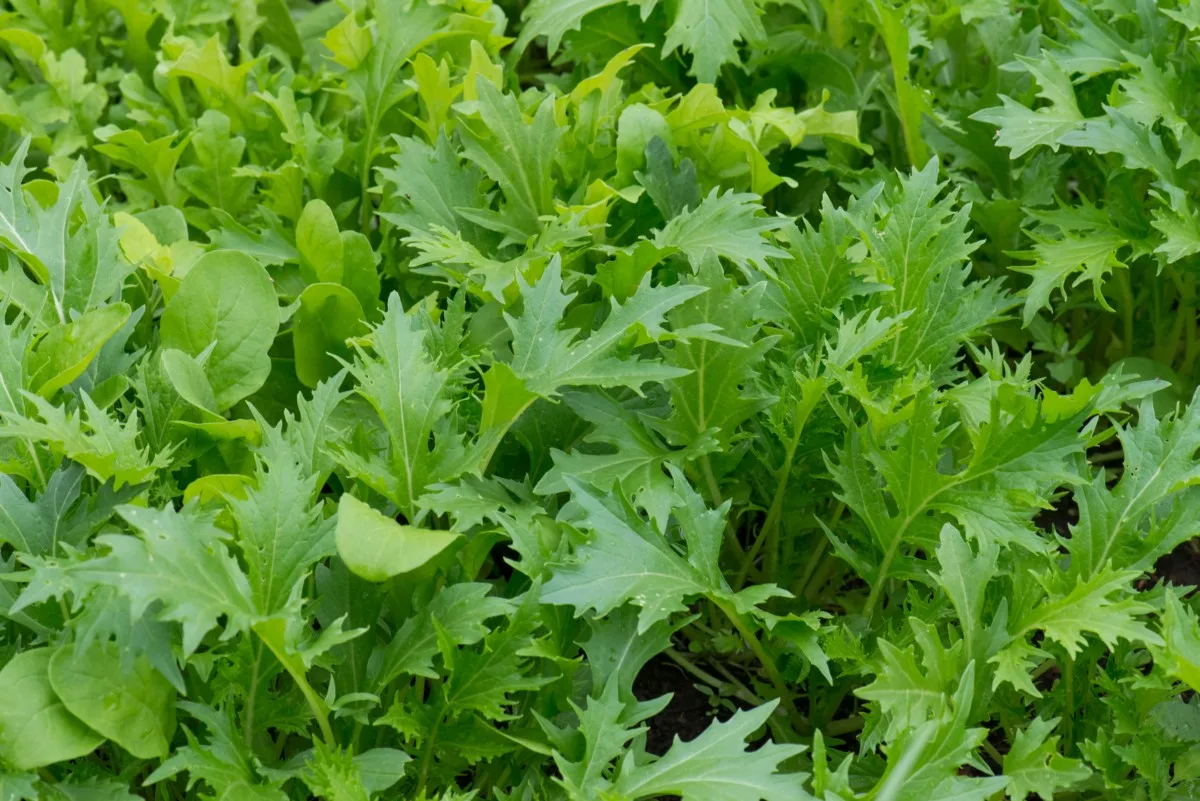
Like kale, mustard greens are a wonderful crop to harvest repeatedly throughout the growing season. If you love your greens on the table, you may want to consider making space for both of them.
Mustard greens are pretty hardy and can be broadcast into a small garden bed, rather than planted in rows. When the weather is cool, they can be planted in full sun. However, when midsummer comes around, putting them in partial shade will help to extend their life – and your harvest.
To harvest in cut-and-come-again style, let the plants grow to about 4-6″ in height. Cut the leaves, using scissors, about 2″ above the soil for use in the kitchen.
Re-water the patch of mustard greens and use an organic, light liquid fertilizer to replenish their growth for future harvests.
16. Nasturtium – Flowers & Leaves As A Cut-and-Come-Again Specialty
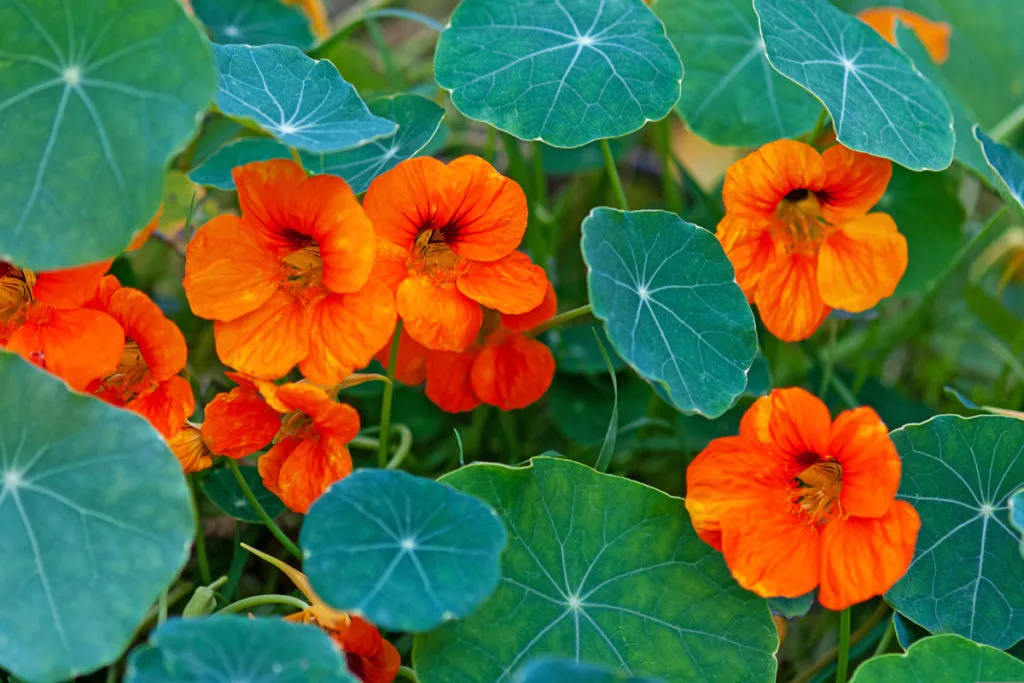
I’ve never seen nasturtiums featured on a list of cut-and-come-again veggies, but we love them so much, that it’s about time they made a listicle.
Nasturtiums have a tendency to sprawl big, or not at all. They can climb garden fences or crawl on the ground. Most importantly, both the flowers and the leaves are edible, which leaves you with a lot of peppery material for your summer salads.
Not only are they tasty, but they are also beautiful. The flowers are a deep orange, and the leaves are round like lily pads.
What’s more, nasturtiums act as a companion plant for broccoli, Brussels sprouts, cabbages, cucumbers, kale, kohlrabi, tomatoes and potatoes. They also attract beneficial insects, what’s not to love?
17. Parsley
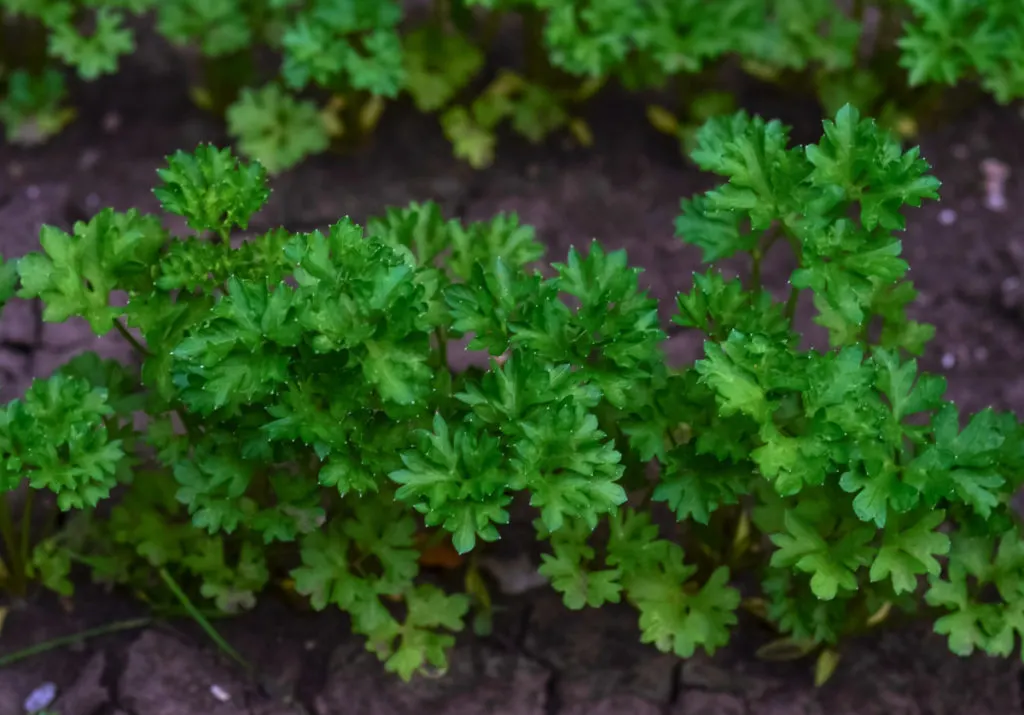
If you adore parsley on your potatoes or in your chicken soup, then this one’s for you. Often times it is frustrating to buy a bunch of parsley at the store, only to have it curl up or get soggy sitting at home.
When you grow it in the garden, you can set all frustrations aside.
It goes without saying that the more you cut the stems back, the bushier it will become. That means more parsley for you, anytime you want it.
You’re going to need some inspiration to eat up all that cut-and-come-again parsley you planted.
Lindsay wrote a fantastic article: How to Grow Massive Bunches of Parsley From Seed Or Starter Plant. Start there to gather the growing basics, then click over to her article on 15 Interesting Ways To Eat Parsley – Not Just A Garnish for some amazing recipes.
18. Purslane
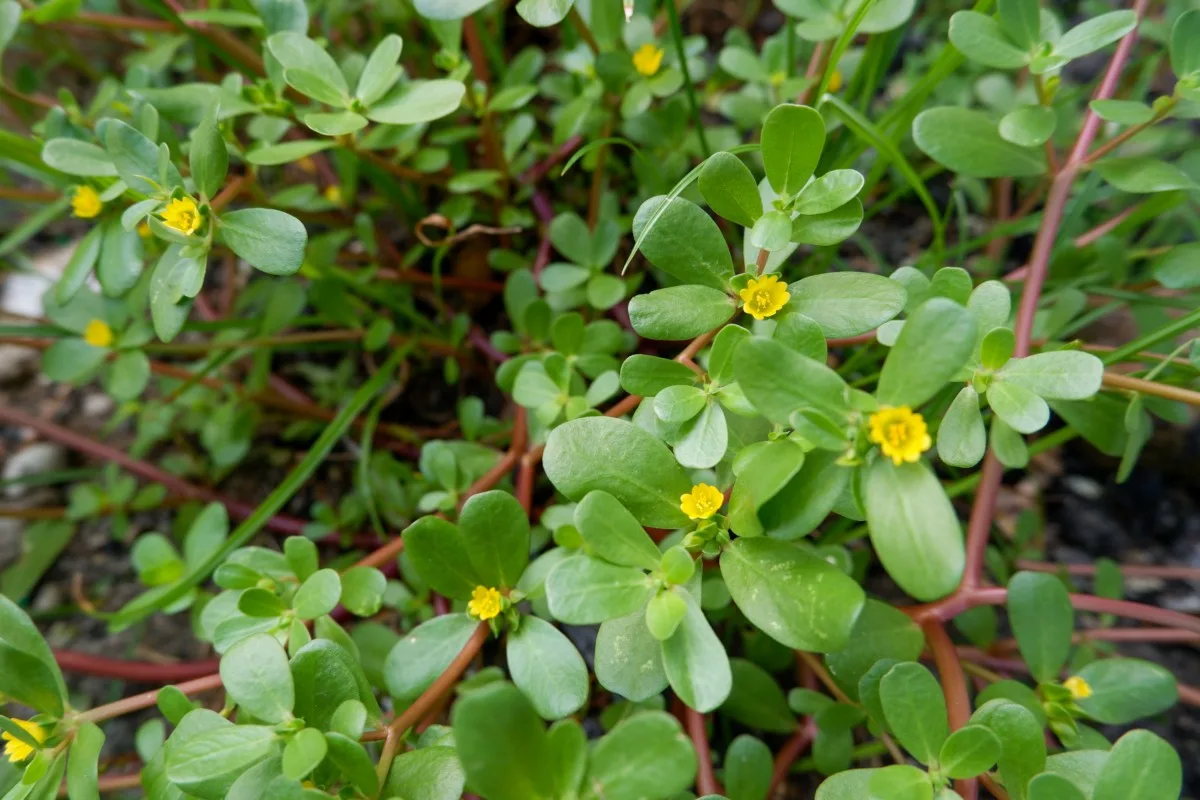
I know, purslane is another weed. But it’s a pretty tasty one and expensive at that. At the market in Paris, France, a small bunch cost more than a few euros.
Let’s just say that it’s rich in omega-3 fatty acids which can “prevent strokes, heart attacks and other forms of heart disease”.
Purslane is juicy, it’s drought-tolerant and full of beta-carotene and antioxidants. It’s a gardener’s friend or foe, depending on how you look at it. If you hoe it, it will most certainly come back again with fervor. As with nettle, once you learn how to embrace it (no, not literally), a plethora of vitamins are yours for the weeding:
- vitamin A
- vitamin C
- potassium
- calcium
- iron
- folate
- choline
- and magnesium
If you haven’t tried it yet, here are 20 Ways to Eat Purslane from Our Permaculture Life
19. Sorrel
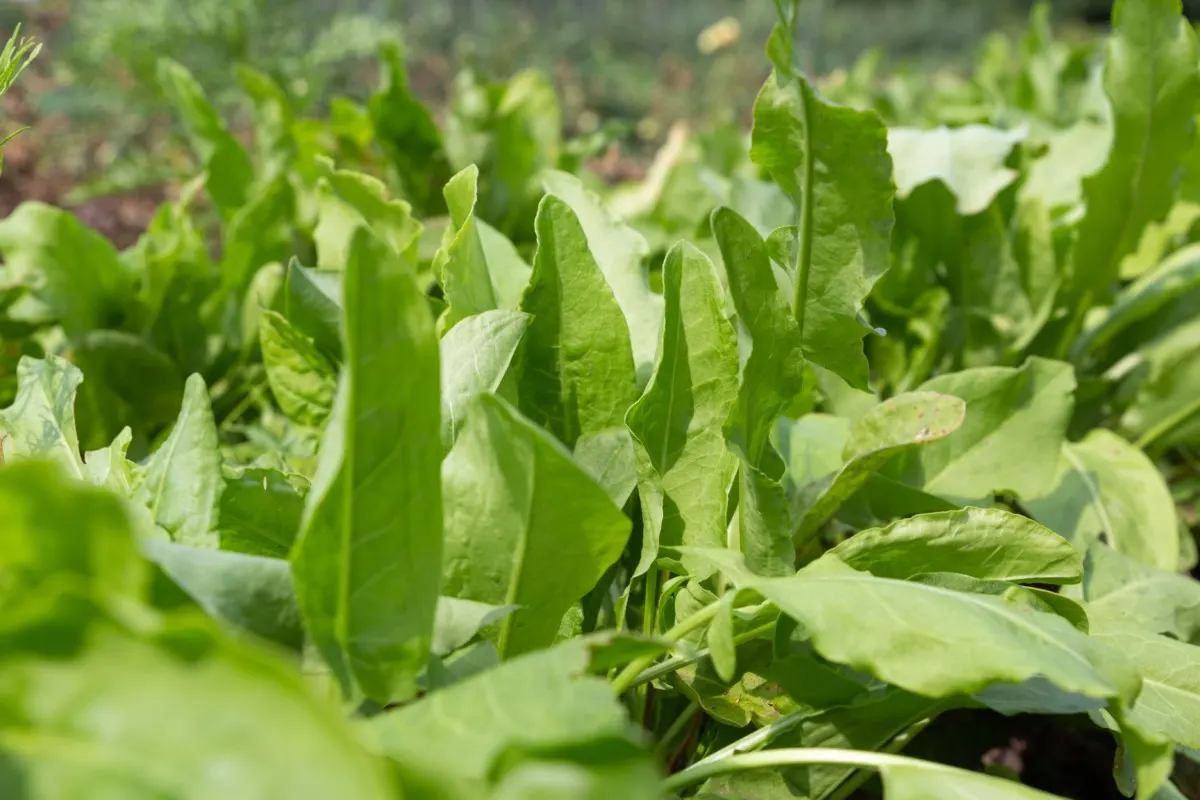
Having an early bunch of greens show up in your garden is almost like winning a prize. Sorrel, like lovage, is a perennial herb that deserves a little more attention.
It’s flavorful in sauces and marinades or tossed into stir-fries and casseroles. But, what does it taste like? If you’ve never eaten it before, you might be surprised by its tangy and citrusy gentle bite.
While sorrel leaves can rise to 24″ tall, when you grow it as a cut-and-come again veggie it’s best to keep trimming it back as soon as the leaves reach 4-8″. This way, you can enjoy a more continual harvest of tender greens.
Direct sow the seeds in full sun or containers.
20. Spinach
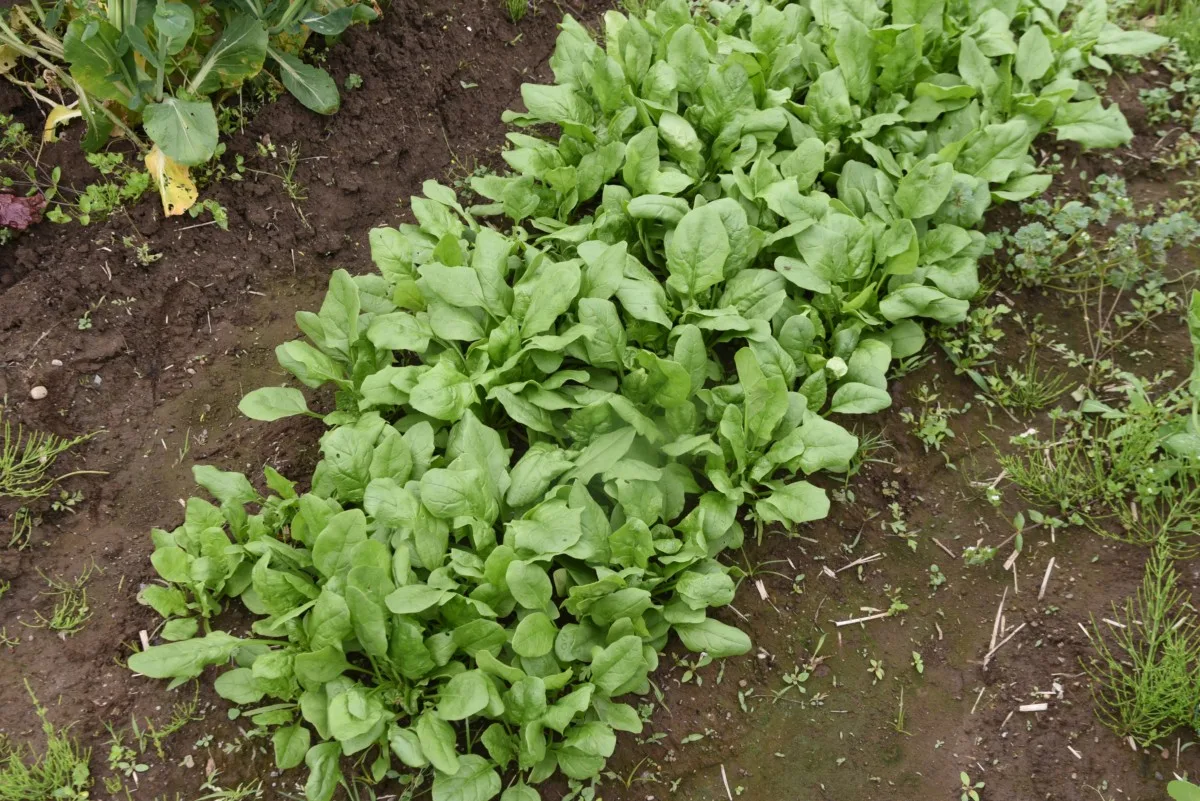
If you prefer a less lemon-like tang to your greens, then perhaps you are a spinach person all the way. What I like best about greens, is that they can be used interchangeably. A handful of this, a few stalks of that, with some wild greens for extra nutrition.
Spinach is among the popular crowd, due to its mild flavor, but that’s not the only reason for growing it. It’s also easy and fast to grow, so when you are looking to put food on the table quickly, it definitely fits in your plans for an emergency garden.
Depending on the spinach varieties you choose, it can be grown all year long in containers, greenhouses and out in the soil. Add in the wisdom of it being an excellent companion plant, combined with repeat harvests and you may start to question why you buy it when it’s so easy to grow.
21. Swiss Chard
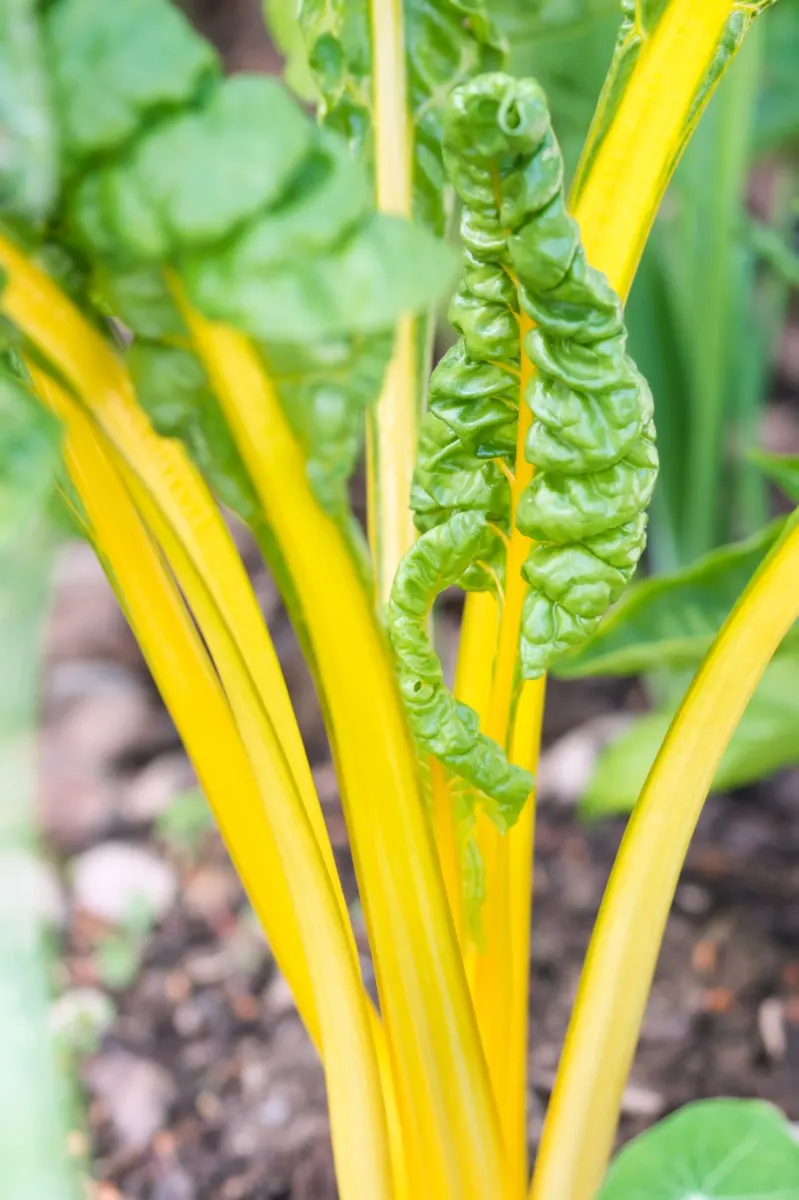
Chard is a beautiful biennial that can tolerate cold temperatures, as well as heat. That being said, if you leave the roots in the ground, as soon as the weather warms up in spring, it will start producing new leaves for you to eat. Then, of course, it will go into seed.
In the first year, however, Swiss chard grows big and tall, with a single leaf extending to more than 24″ under the right conditions. In fact, it grows many leaves.
Like before, as soon as the leaves are large enough, harvest the outer leaves and eat them up. The center will continue to grow and send out new leaves. It will regrow even if it is cut back an inch or two above the soil. Chard really is a veggie that keeps on giving.
22. Turnip (Greens)
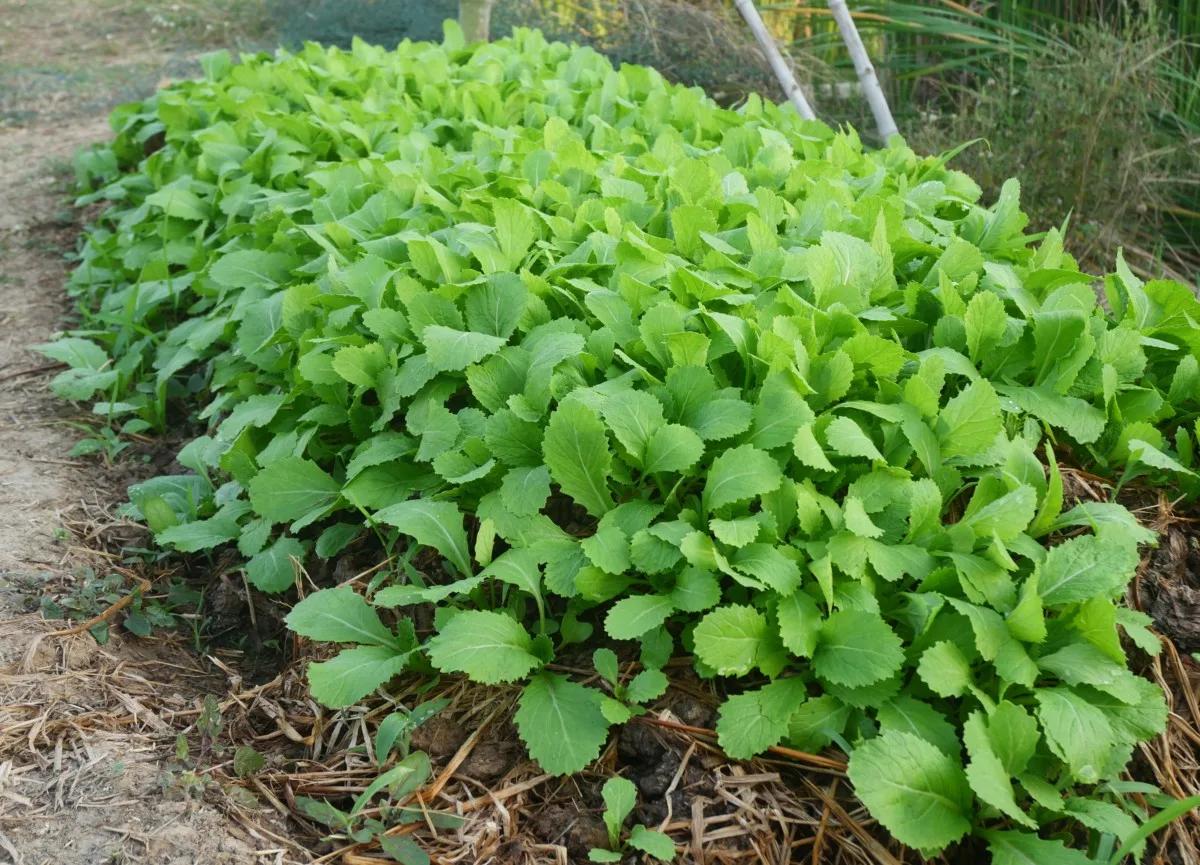
Last on the list of multi-harvest veggies is turnip greens. As with beets, forget about the crop close to the soil. Go for the leafy greens instead.
Rather than expecting an early harvest, here you are left with one of the latest. When the season is coming to an end, you’ll still be out there in the garden with a few stems of turnip greens in your basket.
Again, you may not be as familiar with them as they aren’t commonly sold or eaten. But, when you grow them in your own garden, any new-to-you dish is fair game.
Turnip greens, like mustard greens, are fabulous for Southern-inspired dishes. They can also be added to quiche, stir-fries and hearty winter stews.
Are there any downfalls to a cut-and-come-again garden?
The biggest concern with this type of garden is that the harvests lose flavor and quality as the season progresses.
The secret to keeping your harvests flavorful is to not let the leaves become fully mature before picking them. Always go for the oldest leaves first, but don’t let them get too old. It’s as simple as that.
Naturally, the plants will get tired of producing after a few months. That’s where your other perennials and annuals come into play: pumpkins, parsnips, beans, peas, etc.
No matter if you have a survival garden, an emergency garden, a chaos garden, a front yard or backyard garden, it’s wise to always include at least a few cut-and-come-again veggies.
This way, all you need to do is walk a few steps away and pluck just-as-much-as-you-need fresh and free greens anytime you wish to cook up something amazing.

Get the famous Rural Sprout newsletter delivered to your inbox.
Including Sunday musings from our editor, Tracey, as well as “What’s Up Wednesday” our roundup of what’s in season and new article updates and alerts.

